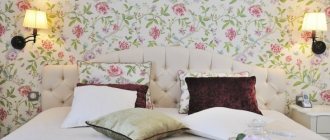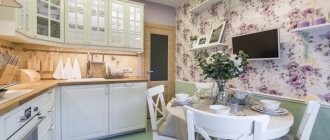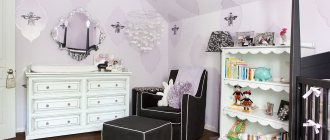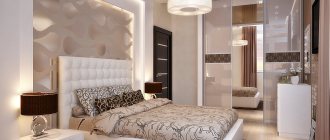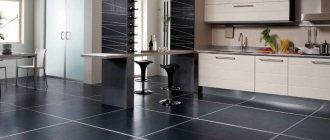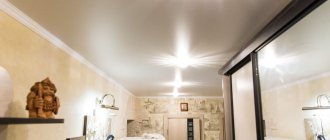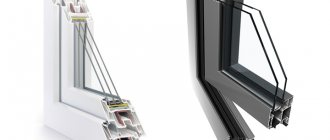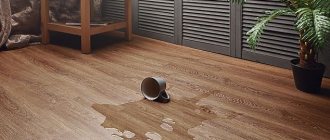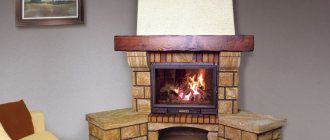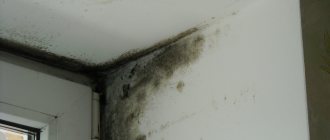Story
Fabric wallpaper appeared long before the invention of modern paper counterparts. Initially, pieces of fabric were used to decorate the walls, and only over time did fabric-based wallpaper appear. Cloth trim was considered an indicator of wealth, both in the time of the kings and today.
The price of fabric wallpaper sometimes confuses even the most determined buyers, but the beauty they create justifies all the costs. Draping walls with fabric was used in the Empire, Classicism, Baroque and Art Nouveau styles, and today fabric wallpaper is actively used even in eco-design.
Compound
Fabric wallpaper is a base made of paper or non-woven fabric, on top of which a textile layer is applied. Either a whole fabric or individual threads, dyed in the desired shade and glued together, can be glued to the base. Completely different materials can be used as textiles: jute, viscose, linen, polyester, etc. Depending on the nature of the fabric covering, the appearance of the wallpaper also changes, becoming softer, satiny, or acquiring completely unique features.
Textile jute and linen wallpaper
Today, the walls of modern houses are decorated with textile jute, felt, linen and silk wallpaper. All these types of wallpaper have in common the fact that they look unique and original on the walls of rooms when decorated. Each of these types of wallpaper has its own unique characteristics. When choosing textile wallpaper, you need to pay attention not only to the pattern, color and general compatibility with the color scheme of the room, but also to the structure of the wallpaper itself, its environmental friendliness and wear resistance.
Textile wallpaper was used as room decoration back in the Middle Ages. Fabric wallpaper in those days spoke of the owner’s wealth, well-being and prestige. Nowadays, wallpapers of this type are an indispensable part of a modern interior; in addition, they show that the owner of the house has very good taste.
Characteristics
Fabric wallpaper (photo) allows you to achieve extraordinary beauty of the interior, which no one, even the most expensive, paper wallpaper is capable of. But, like all materials, textile wallpaper has its advantages and disadvantages.
Advantages
The very first advantage that immediately catches the eye and makes people around the world buy fabric wallpaper is their beauty. Not a single photograph can convey the unique atmosphere of a room decorated with textile wallpaper. You want to touch them, it’s nice to look at them, in general, they are not wallpaper, but sheer pleasure.
The ecological purity and naturalness of this wallpaper captivates modern adherents of a healthy lifestyle and environmentalists. The fabric perfectly allows air to pass through, allowing the wallpaper to “breathe” and prevent the occurrence of fungi and mold. Wallpaper paints are non-toxic and comparable to paints on everyday clothing that has constant contact with the body.
The high density of fabric wallpaper allows you to perfectly absorb noise, so if you cover your walls with them, you will not only get a beautiful interior, but also additional sound insulation.
The density and composition of the wallpaper provide good thermal insulation. This is especially noticeable in the cold season on walls that are not adjacent to other rooms.
And finally, linen wallpaper can boast a strong bactericidal effect. The room will be reliably protected from germs, so this wallpaper is perfect for a nursery.
Flaws
Along with the beauty of textile wallpaper, the first thing a buyer notices is the price. Natural materials for interior decoration have always been expensive, so not everyone can afford fabric wallpaper. The cost increases depending on the number of natural threads used in the production of wallpaper. More threads, therefore, denser and better quality material and more expensive pleasure.
If you bought high-quality and completely natural textile wallpaper without synthetic inserts, then get ready for the fact that they will quickly fade when exposed to direct sunlight. Therefore, you should consider lighting in a room with such wallpaper, providing either diffused light or good electrics.
One more point can hardly be called a disadvantage. The more natural threads there are in the wallpaper and the more closely they adhere to each other, the more noticeable the differences and unevenness in texture. Some people don’t like it, but others, on the contrary, consider it an indicator of naturalness and beauty. It's a matter of taste, but the fact remains a fact.
Textile wallpaper: characteristics, types, gluing
In this article, we will try to explain why fabric wallpaper is very popular as a finishing material for exquisite interiors and what their main advantages are.
A little history of fabric wallpaper, as well as their pros and cons
Initially, the tradition of decorating the walls of premises with fabrics came from eastern countries. The very first material in this category was silk, but a little later people began to use linen, velvet, jute and cotton with no less success. Initially, such coverings consisted only of fabric, but they were not very practical and so people came up with the idea of adding a special reinforcing layer. This is how the first fabric wallpaper appeared.
Modern manufacturers of fabric wallpaper produce three main varieties of this type of wallpaper: paper based, non-woven based and fabric wallpaper, which is obtained by gluing textile threads. The first two types are the most practical, since they are quite easy to apply, thanks to a more traditional base, but at the same time, a person sees only the fabric from above, which makes the interior richer.
Recently, in order to improve the performance properties of fabric wallpaper, various fibers from synthetic materials have been added to their top layer.
If we talk about the advantages of fabric wallpaper, the main ones include the following:
1. Very interesting and aesthetically attractive design.
2. High sound insulation coefficient.
3. High thermal insulation coefficient.
4. High level of resistance to the negative effects of direct sunlight.
5. High resistance to mechanical rubbing influences.
6. Environmentally friendly finishing material, with the exception of cheap analogues based on synthetic materials.
In addition to the rather significant advantages of fabric wallpaper, they have two fairly significant disadvantages that cannot be ignored:
1. They are very impractical, since any contamination that gets on them is very difficult to remove.
2. If the surface is damaged, you will have to change the entire tape, since fabric wallpaper cannot be repaired.
What types of fabric wallpaper are there?
The main division by type in the category of fabric wallpaper is based on the type of fabric that is used in it. Let us recall that in the previous article we looked at how to apply liquid wallpaper with your own hands. The choice should be made based on the room in which the fabric wallpaper will be used, and of course depending on personal preference.
Below you can see the main types of fabric wallpaper:
1. Felt fabric wallpaper. This type of wallpaper is used to decorate the walls of a house, and also, more often, to decorate public spaces. The thing is that their base is impregnated with felt or polypropylene, which makes it possible to clean them using a washing vacuum cleaner. Also, an important advantage of this type of fabric wallpaper is the ability not to bring the surface to an ideal state, since they are able to hide all minor defects.
2. Silk fabric wallpaper. This is the most expensive category of fabric wallpaper. They are used to create refined and rich interiors. Modern manufacturers add viscose to their top layer, which makes wet cleaning possible. This is what ensures the practicality of their operation, which, in turn, creates high consumer demand.
3. Jacquard fabric wallpaper. The main advantage of this species is the richest range of colors - more than two hundred. It is worth noting that this type of fabric wallpaper is produced not in rolls, but in sheets that are up to two hundred and sixty centimeters long.
4. Linen fabric wallpaper. This type of fabric wallpaper is universal. They are equally suitable for both office and residential premises. Flax has a number of unique properties that prevent the appearance and proliferation of bacteria and microorganisms in its structure, but linen fabric wallpaper also has a drawback - they are very “afraid” of water.
5. Velor fabric wallpaper. Some of the most pleasant to the touch, which makes them an excellent solution for bedrooms. But velor fabric wallpapers are the most “capricious” to care for.
6. Synthetic fabric wallpaper. This is the most budget option for fabric wallpaper; by and large, they are not even fabric wallpaper, but analogues, which, due to their environmental friendliness, are usually used only in offices and hallways.
How to apply fabric wallpaper with your own hands
There are two ways of covering with fabric wallpaper: stretching and gluing. Stretching is a very complex method and to implement it you will have to involve professionals, so we will look at the simpler, second method - gluing.
In general, the process of gluing fabric wallpaper is no different from a similar process with paper wallpaper. First, the surface is carefully prepared, then the glue is diluted according to the instructions on the package, then the adhesive mixture is applied to the wallpaper, after which they are pasted and smoothed. The only thing that needs to be noted is that the allowance should be about six centimeters, since fabric wallpaper is more capricious than paper wallpaper.
Types of textile wallpaper
Linen
Linen wallpaper is based on a paper canvas covered with a layer of natural or mixed fibrous threads. The surface of such wallpaper is indistinguishable from ordinary solid linen fabric and looks very beautiful and natural. Linen wallpaper provides excellent heat and sound insulation and has bactericidal properties.
Silk
Contrary to apparent assumption, silk wallpapers are not made from silk at all. They consist of a layer of viscose on a paper base. However, a little silk is still present, but only as an addition to the viscose layer. In this way, manufacturers achieve complete resemblance to real silk fabric. The advantages of this type of wallpaper are that they do not fade even from direct sunlight. Silk wallpaper will be an excellent solution for decorating a study, boudoir or bedroom.
Felt
Natural felt or propylene on a paper base. Polypropylene is foamed polyethylene, so this option is not very environmentally friendly, but more practical and easy to use than felt. Felt wallpaper is pleasant to the touch, soft, and provides good heat and sound insulation. They last a long time and do not fade in the sun. With the help of such wallpaper you can easily hide small irregularities and defects in the wall. Felt wallpaper allows air to pass through well and looks quite impressive. But they have a small drawback - the accumulation of dust. If polypropylene wallpaper can be easily cleaned with a washing vacuum cleaner, then with natural felt wallpaper you will have to tinker. Dry cleaning only is suitable for them. Such wallpaper is suitable for a bedroom, living room or nursery, but in no case for the kitchen.
Jute
Jute wallpaper is made on a paper base, on top of which is applied natural fabric intertwined with linen threads. They have a long service life and perfectly mask wall imperfections. If you are looking for wallpaper for the kitchen, pay attention to this option, since jute wallpaper does not collect dust and does not absorb odors. Cleaning them is easy and simple - manually or with a regular vacuum cleaner.
Velor
A paper base coated with a layer of polyvinyl chloride or bronze paint, onto which a design is applied using adhesive dyes. During the production of velor wallpaper, the properties of an electrostatic field are used. When all layers have been applied, the wallpaper is passed through a special installation that glues charged electrostatic textile fibers to the still wet paint. The surface of the material is dried at high temperature, and the result is a surface that imitates various relief fabrics: tapestries, felt velvet, etc.
"Japanese grass"
This is a special type of textile wallpaper on a paper basis. The interweaving of fiberglass and sage strands allows you to achieve a unique natural effect. The peculiarity of such wallpaper is the inconsistency of color - in one roll, the tones can vary from light to darker, depending on the nature of the sage grass used. To achieve a harmonious design, you need to measure and apply the wallpaper to the wall. The cost of “Japanese Grass” is dizzying, since the production of such wallpaper is very labor-intensive. Despite the fact that the appearance of the wallpaper seems “fragile”, in fact it is very strong and durable.
Jacquard
Jacquard wallpaper is a separate branch of textile wallpaper, numbering more than 250 varieties. The peculiarity of some types is that the roll height can be up to 3 m. This allows you to literally “wrap” the room in several steps, getting rid of unsightly connecting seams. Jacquard wallpaper is made on an acrylic base, which guarantees protection of the outer layer from impregnation with an adhesive composition. Acrylic makes it easy to remove wallpaper from the wall or tighten it if necessary, without damaging the canvas.
Felt and velor on the walls
In appearance, felt and velor wallpapers are similar to each other. The difference lies in the production method and the raw materials used. For felt wall decor, animal fluff (goats, rabbits, hares) and fine wool are used, as well as synthetic materials - acrylic fibers, microfiber, polyester. Velor wallpaper is made from nylon pile, applied to a paper base.
Felt wallpaper can be applied to both paper and foam bases. The main disadvantage of felt and velor is the ability to collect large amounts of dust. Allergy sufferers and people with bronchopulmonary diseases should not use such decor in their room.
The design of felt or velor wallpaper is varied. There are “trellises” that imitate tapestries, there are traditional models with geometric or floral patterns, and they also produce canvases that imitate wood or stone wall cladding.
Features of textile wallpaper
Most types of fabric wallpaper actively absorb odors and collect dust, so it is better to glue them in bedrooms or living rooms. They are quite capricious and require constant care in the form of dry cleaning. Some wallpapers need to be protected from direct sunlight.
If possible, it is better to buy textile wallpaper on a non-woven basis rather than on a paper basis. This will avoid deformation during gluing and drying. In addition, non-woven wallpaper is much stronger and will last much longer. Hanging fabric wallpaper yourself is a risky endeavor. Therefore, if you are not confident in your abilities, it is better to play it safe and entrust the work to professionals. Moreover, considering the cost of such beauty, it is better not to experiment.
How to glue correctly
Like all other types of wallpaper, fabric wall coverings have their own characteristics regarding the method of gluing them. Don’t worry: even if you don’t have any significant experience in this kind of work, if you strictly follow all the necessary instructions, you can do the gluing yourself, doing everything yourself. So, let's look at the main features that you need to pay attention to during the gluing process:
- It is advisable to use the adhesive composition exactly the same as for any other types of heavy wallpaper, primarily vinyl. By the way, do not confuse such adhesive compositions with glue for bamboo wallpaper on a fabric basis.
- Glue is applied to the wallpaper base using a roller or brush.
- If we are talking about gluing felt wallpaper, it is enough to apply the glue exclusively to the wall itself. There is no need to spread the adhesive solution on the canvas.
- Of course, avoid creating creases and folds.
- Fabric wallpaper is glued end-to-end. There is no need to glue them overlapping.
In any case, in general, the entire process of gluing fabric wallpaper is very similar to the technology of gluing more traditional roll coverings. It all depends on what basis they were made on. Accordingly, the gluing features are also no different from what needs to be taken into account when gluing wallpaper made of paper, non-woven, vinyl and fiberglass. It goes without saying that all work must be done carefully, strictly following all the instructions specified by the manufacturer in the instructions.
